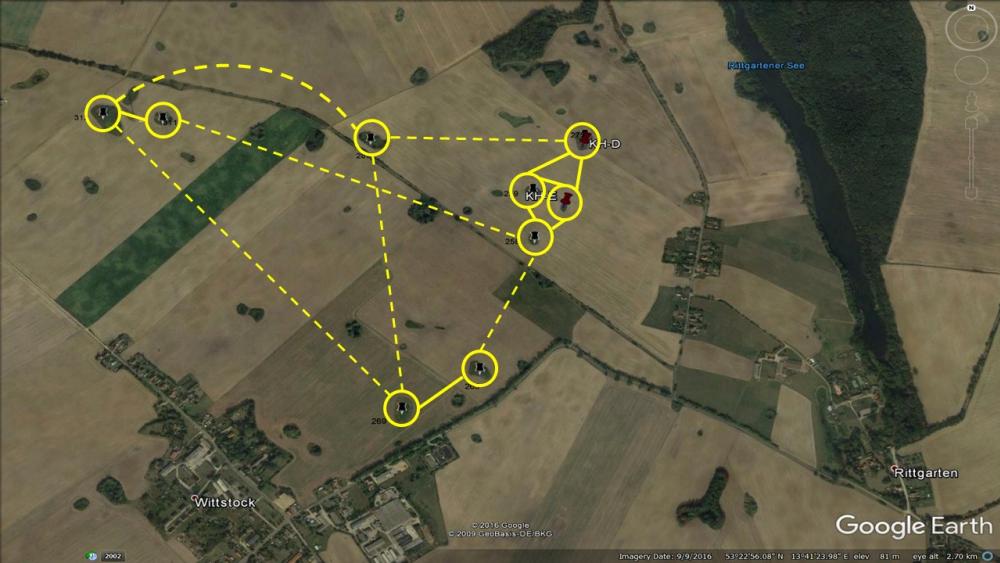
Schematic representation of the probabilistic connectivity network using the example of kettle holes in northern Brandenburg: The lines between the patches show whether the probability of dispersal is rather high (solid line) or low (dashed line). The calculation with the NPC approach does not only take into account the spatial distance between the patches, but also the species-specific dispersal-ability and the size of the patches. | Figure: Sabine Wollrab/Rajat Karnatak
The approach promises to capture important characteristics of dispersal, which is stochastic in nature, meaning that individual events of species dispersal are unpredictable. In addition, the new formalism allows a more general description of the process than previous models, which often oversimplify the spatial structure of the landscape and assume that the dispersal process is deterministic. In particular, the new approach can provide predictions about the distribution and persistence of species at different time scales, and their dependence on patch distribution and patch density in the landscape.
The results obtained by Rajat Karnatak and Sabine Wollrab using the NPC formalism demonstrate that dispersal rates do indeed affect species persistence. Depending on the balance between local growth and in-coming versus out-going biomass, beyond a certain threshold, an increase in dispersal rates will strongly decrease the probability of persistence. While this seems to be logical, it is actually not captured by classical approaches (Deterministic Spatially Implicit Approaches) due to an inherent mathematical symmetry. Furthermore, the two researchers were able to show that patch density critically affects the probability of species persistence, with greater patch densities increasing it because even at low dispersal rates, individuals are more likely to reach other habitats.
Connectivity between patches, the extent and nature of habitat connectivity, is ephemeral and highly variable. The spatio-temporal flexibility of the NPC formalism promises to better capture this and makes it broadly applicable. For example, the NPC approach can be used to predict the influence of climate and land use changes on species distribution patterns.





